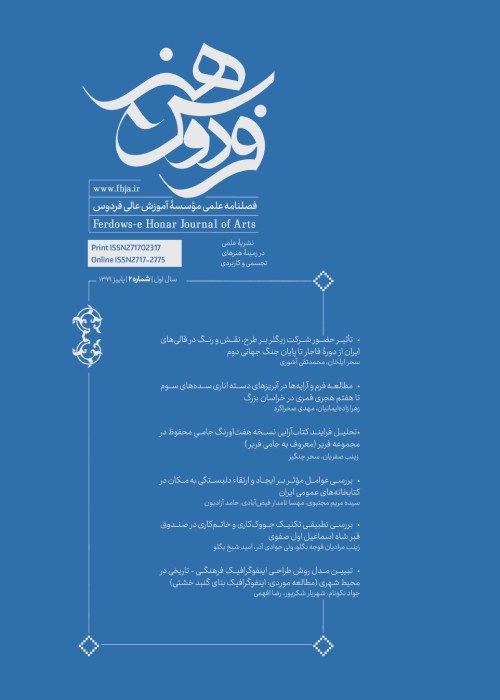Comparison of Moral Evolution Art Works Model from the Perspective of Noël Carroll and Berys Gaut
One of the important issues in the philosophy of art regarding the relationship between art and ethics is the relationship between aesthetic value and moral value in a work of art. Among the analytical philosophers of art, there was a trend that saw a positive relationship between the "moral value" and the "aesthetic value" of works of art. There is a new movement that presents a kind of new moralism for art's moral evaluation. This movement is a protest against “radical moralism” and also its supplement. In fact, radical moralism (also, known as "moralism", "extreme moralism" or "unlimited moralism") ignores all aesthetic values in favor of moral values. Noël Carroll formulated the first formulation of the moderate view (moderate moralism). As Carroll himself points out somewhere, "moderate moralism" is in fact a departure from his earlier view of "soft formalism." Based on "soft formalism," Carroll believed that although the moral aspect of a work of art was not related to its aesthetic aspect, there was no reason not to consider the moral element. Therefore, the work of art can be considered a better work due to the presence of "moral excellence" in it. In "moderate moralism," Carroll not only allows the moral evaluation of works of art but also seeks to prove the relationship between the moral aspect and the aesthetic aspect of the work of art. At the same time, Berys Gaut formulated the first version of his vision (ethicism). "Moderate moralism" and "ethicism" have in common that moral evaluation does not apply to all works of art and should be considered in relation to works for which such evaluation is possible. In the field of sampling for moral evaluation, Carroll turns to works of narrative, while Gaut discusses some of the other representative arts, and this leads to the "ethicism" introducing a wider range of works into moral evaluation. Both versions of the moderate view have been repeatedly criticized in various ways. Meanwhile, others have provided versions of moderate moralism. Among which only Matthew Kieran's view (most moderate moralism) is striking. From the point of view of moderate moralism, one can find a model for the moral evaluation of works of art that, in addition to the moral values of the work, also takes into account aesthetic values. This paper, using the library collection method, first, explains Carroll and Gaut moral evaluation models and then, evaluates and compares them. The results of this study show that the similarities between Carroll and Gaut's moral evaluation models are: a. Moral evaluation is not allowed in all kinds of arts; b. Using “insofar as" and “all things considered" principles; c. Believing in pluralism about the values of the work of art; d. Considering aesthetic values along with moral values; e. Provide an argument based on “the merited response argument”. Also, the differences between Carroll and Gaut's moral evaluation models are: a. from the perspective of inclusion of examples for moral evaluation, in descending order, Gaut (any work that has a moral aspect related to the prescribes of the work) and then Carroll (any work whose moral aspect is related to attracting the audience) are included; b. After the conditions are met, in Gaut's view "always", moral goodness/evil is considered aesthetic goodness/defect, but in Carroll's view "sometimes", moral goodness/evil is considered aesthetic goodness/defect; c. In Carroll's view, “an audience due to the moral features” plays a more important role than Gaut's. In general, Gaut's model is superior to Carroll's model for several reasons: a. It has a wider range; b. Contrary to Carroll's view, it is inconsistent with "moderate immoralism"; c. Unlike Carroll's view, it is more consistent with non-moderate moralist perspectives; d. The “an audience due to the moral features” has no key place in the argument; e. In formulating an argument, he uses "always" instead of "sometimes"; f. He Has more emphasis on the “insofar as" and “all things considered" principles; g. It is more in line with local perspectives. Proving and accepting the relationship between the moral and aesthetic aspects of the work can be the basis for entering into other topics such as justifying or rejecting censorship, how the moral impact of the work on the audience, how to legislate based on ethics in art and comparing moderate views with other philosophical and mystical views which were not reviewed in this article and are considered as the future of this article.
- حق عضویت دریافتی صرف حمایت از نشریات عضو و نگهداری، تکمیل و توسعه مگیران میشود.
- پرداخت حق اشتراک و دانلود مقالات اجازه بازنشر آن در سایر رسانههای چاپی و دیجیتال را به کاربر نمیدهد.



